How to build your own Bluetooth streaming home audio system
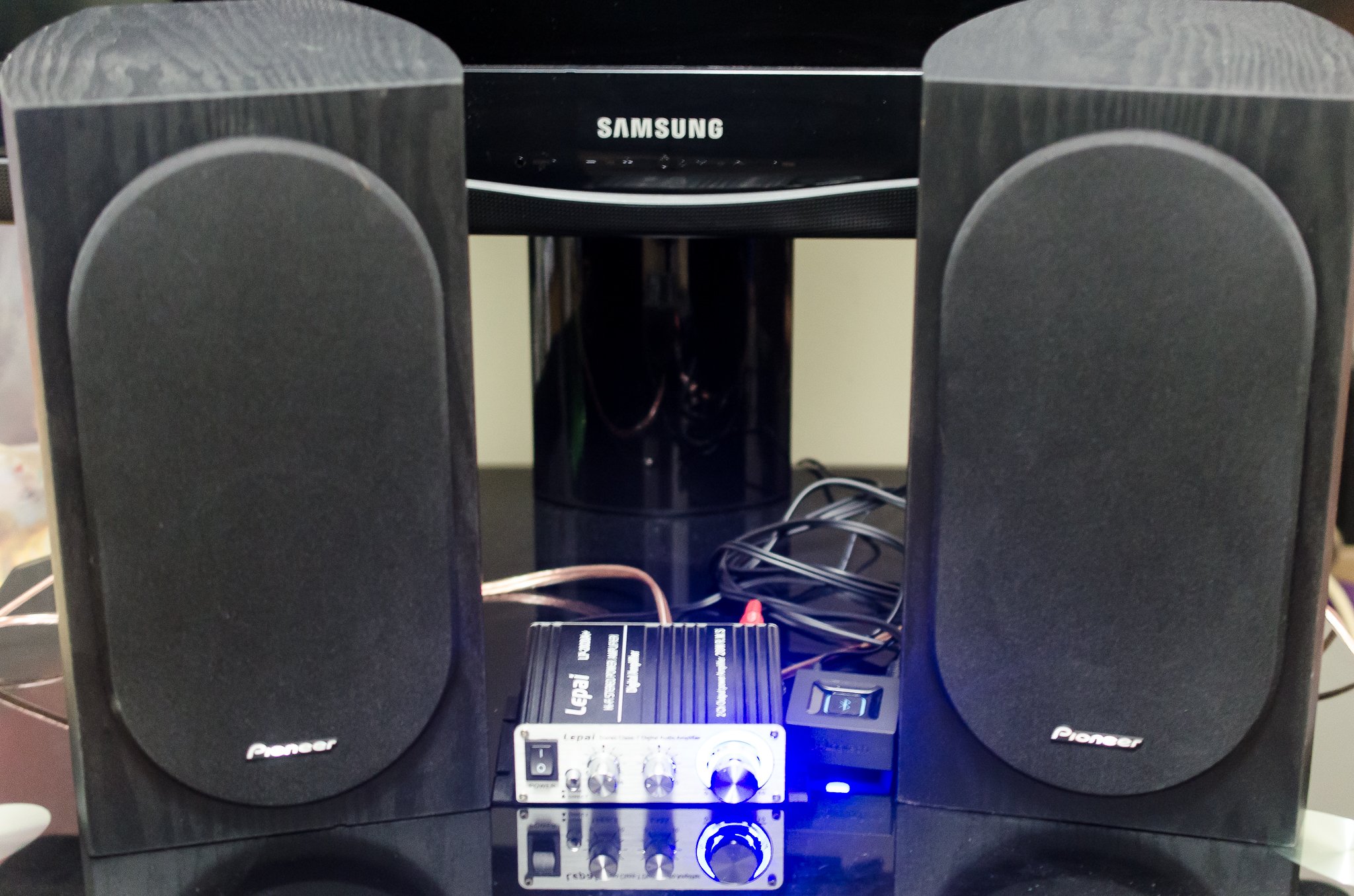
Get superior audio quality without spending a ton of money
There are a lot of ways to stream music at home. Dedicated Bluetooth speakers, like the Supertooth Disco or Jawbone Jambox work well, but because they are designed for portability they don't sound all that great. At home, the Chromecast is cheap and easy if you already have a home A/V system to distribute the music, or you can splurge and pick up a Sonos for better sound and features like multi-room broadcasting. But, as we all know, a DIY junkie always has his or her eyes open for something better.
I've got an alternative that lets you not only stream music from your Android (or any portable device that supports Bluetooth 3.0 or higher with A2DP) or computer, but will sound as good as you want it to sound, determined on how much you want to spend on speakers. Realistically, you can spend $200 and have the very best audio possible while streaming over Bluetooth, or you can spend $100 and have something that sounds really good and the satisfaction that you did it yourself.
And it's really easy to set up once you figure out which parts to buy.
We'll talk more about the components in a bit, but first let me explain what you're doing here. You're taking a cheap (but surprisingly good-sounding) "bookshelf" amp, and using a Bluetooth audio receiver as its input. Add a pair of speakers, and you have instant stereo from Google Play Music, Pandora, or any online streaming source.
It's small, it's cheap, and it sounds great.
Here's what you'll need.
The amplifier
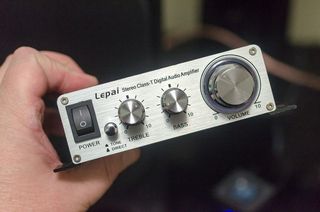
There are literally hundreds of small "bookshelf" amplifiers (a pretty generic term for a small amp that will drive small passive speakers) out there to choose from. Prices start at about $20, and as you add more features — like sub output or multi-channel outputs — things can get much more expensive. I'll leave the discussion of which bookshelf amp is best for another time, but what's important to remember is that we're talking about a device that streams audio from the Internet, so we can get away with the cheaper alternatives. Streamed audio is not known for it's amazing sound quality (you're streaming compressed audio at a maximum of 320kbps), and adding Bluetooth to the mix means that you will never have perfectly flat "audiophile" quality sound coming in to this system. That means you don't need something like an expensive tube amp to preserve sound that was never delivered.
Be an expert in 5 minutes
Get the latest news from Android Central, your trusted companion in the world of Android
This may sound like I'm claiming that all streamed music sent over Bluetooth is bad, but that's not at all what I'm saying. I'm just saying that it isn't ever going to be perfect, so you don't need equipment that can send out perfect audio to your speakers. In a basic 2-channel setup like what I'm describing, all the amplifier is doing is passing along a signal that's boosted a bit to your speakers. It's easy to preserve the quality of the source audio with a cheap amp.
For this project I went with the Lepai LP 202A+ that I picked up for $19.59 from Amazon. It's small, it provides enough power for a decent pair of speakers, and has a bit of tone adjustment via front knobs for treble and bass. It's certainly not the best small amplifier you can buy, but as mentioned, we don't need the best for this project.
A Bluetooth audio adapter
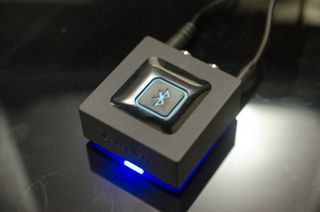
This is the "brain" of the whole system. The Bluetooth audio adapter is what your source — be it your phone, a tablet, or your Bluetooth-enabled desktop or laptop computer — is going to connect to. It acts just like a set of Bluetooth headphones, so that means it can send all audio out or act as a media audio destination in apps that support it. Google Play Music is a good example here, and you can find your Bluetooth adapter listed in the "cast" button in the Android app. If you've used a set of Bluetooth headphones or something like a Jambox, you know how this all works. If you haven't used a pair of Bluetooth headphones or a stand-alone speaker, you'll figure it out easily.
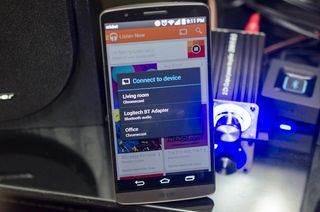
For my Bluetooth adapter, I went with the Logitech Bluetooth Audio Adapter. You can find this on Amazon for $29.99, and it works really well. Another great option is the Monoprice BlueTooth Music Receiver. Basically, all you need is a device that uses Bluetooth 3.0 (or higher) and features A2DP audio streaming, and a way to connect the output to the audio input on your amplifier. I've been playing with several different types and models, and have found no noticable difference in the audio quality, but with all Bluetooth devices, the important part is that they stay connected to your Android. The two I mention above have given me zero issues in that area.
The speakers
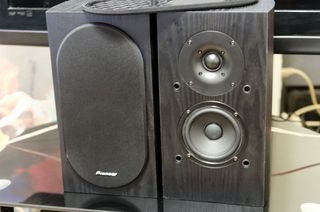
This is the most important part of the system, and will make all the difference in the sound quality. It's also the part that can be the most expensive, and you'll never find two music lovers who can agree on which speakers are the best. There's two ways to think here:
I want a fairly cheap system that sounds as good or better than a stand-alone Bluetooth speaker.
I will spend a little more money and have a system that gives me the best possible sound from audio streamed over Bluetooth.
If you fall into the first category, a $30 pair of small cube speakers will do you just fine. Sure, you could spend more money and have something that sounds better, but your sub-$100 audio system will sound better than those expensive Bluetooth speakers you see online and at Target.
If you want to spend more money, you'll have a single-room sound system that sounds better than anything else you can buy. What you won't have is some of the extra features that come with something like a Sonos system. There's a reason that those networked speakers are so expensive, but it's not always about the audio quality.

What you'll need to remember in either case is that you need the right kind of speakers. If you know your amplifier is set up for 4 or 6 Ohm speakers, get 4 or 6 Ohm speakers. My speakers happen to have an impedance of 6 Ohms. The amplifier I bought will drive them because it drives low power speakers from 4 to 8 Ohms. If you have no idea what this means, get standard 8 Ohm speakers and you'll be fine. The important part is that you get a pair of passive speakers, and not a pair that you plug into the wall outlet so that they have their own power source. You're providing that with the amplifier you bought. If you're in doubt, just ask someone.
For my little setup, I went with a pair of Pioneer SP-BS22-LR bookshelf speakers. I grabbed them while they were on sale at Amazon for $99.99 with the idea that I would strip them and use the cabinets to build my own speakers. But they sound so good, I've scrapped those plans and roll with them as-is. The good news is that they, too, are overkill for a streaming audio system. There are plenty of $50 Bookshelf speakers that will sound just as good, because the source of the music is no better than they can deliver. See what's on sale, and read some reviews. Don't get discouraged by the insane amount of arguing you'll see about any speakers, just look for reviews from average users like you and me who just want their music to not sound like crap. Audiophiles like to fight on the Internet even more than smartphone fans.
One last thing to keep in mind is the power of your amp. In my case, the little Lepai will only put out about 17 watts per channel, and if I had went with any bigger or better speakers there wouldn't be enough "oompf" to drive them correctly. Chances are that if you buy an off-the-shelf small amplifier, any pair of off-the-shelf small speakers will be fine, but read the specifications to make sure you can output enough to properly drive them.
Setting it up and trying it out
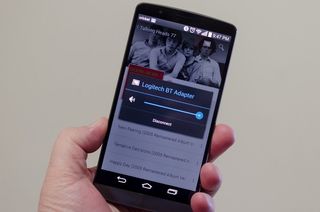
This is the easy part. On the back of your amp you'll have a place for audio input. Your Bluetooth adapter gets connected here, and chances are the cable you need to connect them will be in the box with your adapter.
You'll also see a place for left and right audio out, and thats where the speakers connect. Run a speaker wire from each to the speaker itself, and make sure to connect positive to positive and negative to negative (red to red and black to black). Your speaker wire will have a stripe on one of the conductors, be sure the striped wire is on the same color at each end. Do the same for the other speaker, and plug everything into the wall.
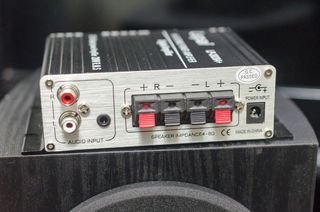
Next, grab your phone and make sure Bluetooth is on. Follow the pairing instructions that came with your adapter. Next, turn the volume down on your amp and try it!
Take a few minutes to set the tone controls to your liking and ramp up the volume to enjoy your new Hi-Fi audio streaming system!
Extra bonus protip round
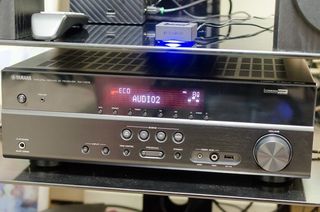
If you have an A/V receiver already hooked up with the right speaker setup (2.1 channel audio for life!), your Bluetooth adapter beats the pants off of a Chromecast. No more wishing your favorite app had Chromecast support, because you can send the audio out from anything on your phone to the best speakers in your house. It's the best way I can think of to make your dog howl or keep your neighbors up at night.
Jam on!

Jerry is an amateur woodworker and struggling shade tree mechanic. There's nothing he can't take apart, but many things he can't reassemble. You'll find him writing and speaking his loud opinion on Android Central and occasionally on Threads.